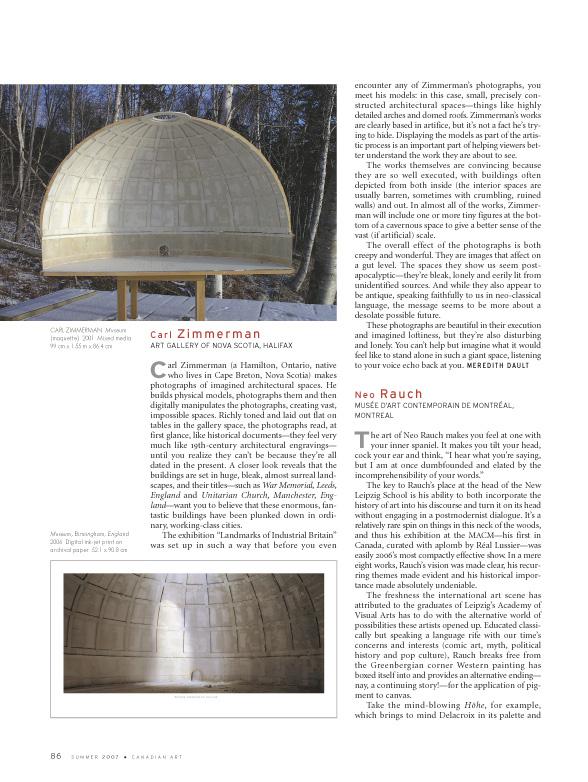The art of Neo Rauch makes you feel at one with your inner spaniel. It makes you tilt your head, cock your ear and think, “I hear what you’re saying, but I am at once dumbfounded and elated by the incomprehensibility of your words.”
The key to Rauch’s place at the head of the New Leipzig School is his ability to both incorporate the history of art into his discourse and turn it on its head without engaging in a postmodernist dialogue. It’s a relatively rare spin on things in this neck of the woods, and thus his exhibition at the MACM—his first in Canada, curated with aplomb by Réal Lussier—was easily 2006’s most compactly effective show. In a mere eight works, Rauch’s vision was made clear, his recurring themes made evident and his historical importance made absolutely undeniable.
The freshness the international art scene has attributed to the graduates of Leipzig’s Academy of Visual Arts has to do with the alternative world of possibilities these artists opened up. Educated classically but speaking a language rife with our time’s concerns and interests (comic art, myth, political history and pop culture), Rauch breaks free from the Greenbergian corner Western painting has boxed itself into and provides an alternative ending— nay, a continuing story!—for the application of pigment to canvas.
Take the mind-blowing Höhe, for example, which brings to mind Delacroix in its palette and composition. This is the familiar basis from which any art-educated viewer can start to piece together an analysis of the monumental work as a whole, but soon we are left flailing in a beautiful mess of symbols and time sequences and bits of stories we know speak loudly but which we cannot possibly comprehend. What is that mass of paint globs poking its way through a hole in a wooden plank? What is happening in the miniature-scale supermarket in the lower right corner? What are we to glean from the dire expression on the central figure’s face?
It’s an incredibly addictive formula, the unsolvable puzzle—like the New York Times crossword but without the implication of stupidity if one happens to fail. We can’t possibly begin to grasp the entirety of a Rauch painting—everybody knows that; the curator even makes it clear in his catalogue text. Rauch’s vernacular is idiosyncratic. It is consistent, both formally and thematically (he has an evident propensity for larvae, stages of becoming, staircases, diagonals and dramatic horizontal shapes jutting out from the right-hand side of the foreground), but it is a secret language he mutters to himself (and perhaps to his spaniel?) as he paints gigantic, ambiguous, beguiling narrative tracts.
This is an article from the Summer 2007 issue of Canadian Art.

 Spread from the Summer 2007 issue of Canadian Art
Spread from the Summer 2007 issue of Canadian Art







